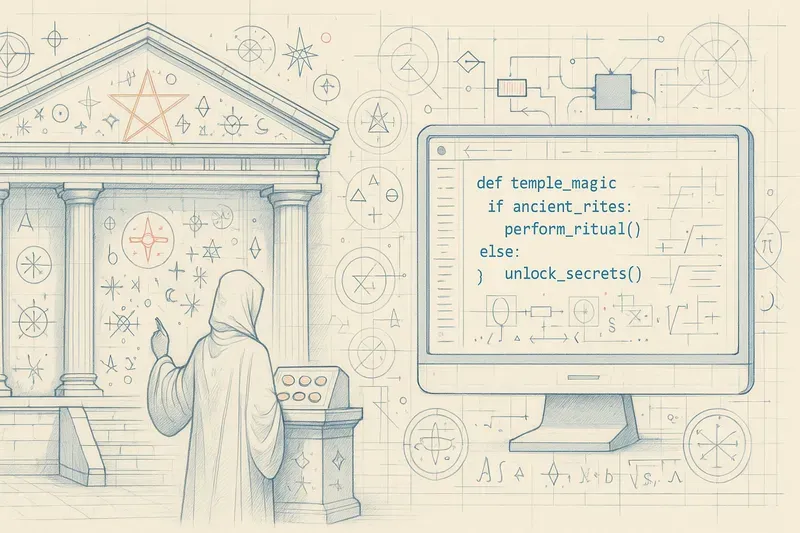
Vibe Coding: Between Magic, Rituals, and AI
In my youth readings, one passage particularly struck me. In the first volume of Foundation by Isaac Asimov, Hober Mallow, a master merchant of the Foundation, discovers an operational atomic power plant on a remote planet. Intrigued, he goes there and notices a troubling fact: the people watching over this technology no longer understand how it works. They are guardian-technicians, inheritors of knowledge they only repeat. Their knowledge is no longer scientific, it has become ritual. They know how to press the right buttons, but ignore why it works. Knowledge has become mystical.
Code is technical knowledge, resting on many pillars (HTML, HTTP, browser for a web application, for example). The knowledge we acquire through experience about these foundations allows us to better anticipate performance or security issues that certain approaches can generate.
All the developers I’ve worked with who continued in this profession were driven by a thirst to understand, a quest for the “right way” to do things. Others gradually turned away from code, failing to find meaning or mastery in their practice.
Vibe coding is an approach to development where most of the code is generated by an AI agent through a chat interface. For example: “Add an address field to my form.” The agent then handles writing the HTML code and the associated processing code.
This method allows obtaining results without prior technical knowledge and seems to redefine the rules of what a “developer” is. But whether coded traditionally or “vibe coded,” an application remains subject to the same fundamental requirements:
- It must be performant and responsive.
- It must be able to evolve at a reasonable cost.
- It must guarantee data and process security.
If you create an app just to feed a TikTok titled “The End of Devs,” these constraints probably don’t matter. But as soon as you aim for a sustainable product, these criteria apply. A non-coder — or even a young developer — will naturally struggle to guarantee these three pillars. And therefore, their code will struggle to hold up in a complex and evolving environment.
But we shouldn’t despise vibe coding either. It allows non-developers to create simple MVPs, capable of seducing first users or even investors. It can spark vocations, encourage those who would never have dared to venture into code.
Vibe coding isn’t a promise of tenfold productivity. It’s a new way to prototype, to test, to create. A new source of wonder and frustration, but which, in the end, will make you more agile, more inventive, more efficient — and yes, more productive.
 AiBrain
AiBrain